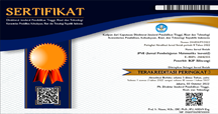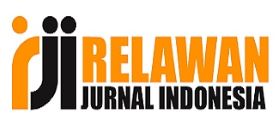SYSTEMATIC LITERATURE REVIEW : KEBERAGAMAN CARA BERPIKIR SISWA DALAM PEMECAHAN MASALAH MATEMATIS DITINJAU DARI SELF-EFFICACY
DOI:
https://doi.org/10.22460/jpmi.v5i1.p271-286Keywords:
Ways of Thinking, Problem Solving, Self-EfficacyAbstract
This research is motivated by the fact that each student's different way of thinking in dealing with problems will produce different solutions. This different way of thinking is influenced by the schemata of knowledge that are formed in each other's minds. so that diversity can describe the way students think in the learning process, especially in solving problem solving problems. In this case, self-efficacy acts as an affective aspect that affects how students think, motivate themselves, and build confidence in students in the learning process. Therefore, this study aims to conduct a literature review related to the diversity of students' ways of thinking in solving mathematical problems in terms of self-efficacy. The research method chosen in this research is a systematic literature study. Data collection was obtained from the Google Schoolar database using the Publish or Perish application. The results of this study can contribute to further research for researchers who compile research on this issue.
References
Aggarwal, I., Woolley, A. W., Chabris, C. F., & Malone, T. W. (2019). The impact of cognitive style diversity on implicit learning in teams. Frontiers in Psychology, 10(FEB), 1–11. https://doi.org/10.3389/fpsyg.2019.00112
Browers, C. S., & Ho, H. W. L. (2021). Seeing through their eyes: the diversity and inclusion lessons learned from rural university students. Higher Education Evaluation and Development, ahead-of-p(ahead-of-print). https://doi.org/10.1108/heed-12-2020-0053
Celik, H. C., & Ozdemir, F. (2020). Mathematical Thinking as a Predictor of Critical Thinking Dispositions of Pre-service Mathematics Teachers. International Journal of Progressive Education, 16(4), 81–98. https://doi.org/10.29329/ijpe.2020.268.6
Collins, R. H., Sibthorp, J., & Gookin, J. (2016). Developing III-structured problem-solving skills through wilderness education. Journal of Experiential Education, 39(2), 179–195. https://doi.org/10.1177/1053825916639611
Daneshfar, S., & Moharami, M. (2018). Dynamic Assessment in Vygotsky’s Sociocultural Theory: Origins and Main Concepts. Journal of Language Teaching and Research, 9(3), 600. https://doi.org/10.17507/jltr.0903.20
Drijvers, P., Kodde-Buitenhuis, H., & Doorman, M. (2019). Assessing mathematical thinking as part of curriculum reform in the Netherlands. Educational Studies in Mathematics, 102(3), 435–456. https://doi.org/10.1007/s10649-019-09905-7
Ducay, J. T., & Alave, A. D. (2021). Self Efficacy, Anxiety, and Academic Performance in Mathematics of Junior High School Students. 11(1), 41–46. https://doi.org/10.46360/globus.edu.220211009
Elsbach, K. D., & Stigliani, I. (2018). Design Thinking and Organizational Culture: A Review and Framework for Future Research. Journal of Management, 44(6), 2274–2306. https://doi.org/10.1177/0149206317744252
Fajri, M., Yurniawati, & Utomo, E. (2019). Computational Thinking , Mathematical Thinking Berorientasi Gaya Kognitif Pada Pembelajaran Matematika Di Sekolah Dasar. Dinamika Matematika Sekolah Dasar, 1(1), 1–18.
Furness, J., Cowie, B., & Cooper, B. (2017). Scoping the meaning of ‘ critical ’ in mathematical thinking for Initial Teacher Education. https://doi.org/10.1177/1478210317719778
Gao, J. (2020). Sources of Mathematics Self-Efficacy in Chinese Students: a Mixed-Method Study with Q-Sorting Procedure. International Journal of Science and Mathematics Education, 18(4), 713–732. https://doi.org/10.1007/s10763-019-09984-1
Grier, S. A. (2020). Marketing Inclusion: A Social Justice Project for Diversity Education. Journal of Marketing Education, 42(1), 59–75. https://doi.org/10.1177/0273475319878829
Haleva, L., Hershkovitz, A., Tabach M. (2021). Students’ Activity in an Online Learning Environment for Mathematics: The Role of Thinking Levels. Journal of Educational
Harel, G. (2001). The Development of Mathematical Induction as a Proof Scheme : A Model for DNR-Based Instruction. Learning and Teaching Number Theory, Journal of Mathematical Behavior, 185–212.
Herden, T. T. (2020). Explaining the competitive advantage generated from Analytics with the knowledge-based view: the example of Logistics and Supply Chain Management. Business Research, 13(1), 163–214. https://doi.org/10.1007/s40685-019-00104-x
Hong, J. Y., & Kim, M. K. (2016). Mathematical abstraction in the solving of ill-structured problems by elementary school students in Korea. Eurasia Journal of Mathematics, Science and Technology Education, 12(2), 267–281. https://doi.org/10.12973/eurasia.2016.1204a
Hung, W. (2016). The Interdisciplinary Journal of Problem-based Learning 10 th ANNIVERSARY SECTION : PAST AND FUTURE All PBL Starts Here : The Problem. Interdisciplinary Journal of Problem-Based Learning Volume, 10(2).
Hunt, J, H., et al. (2021). Special educators’ knowledge of student mathematical thinking. Journal of Mathematics Teacher Education https://doi.org/10.1007/s10857-021-09508-1
Incebacak, B. B., Yaman, S., & Tungac, A. S. (2018). Analysis of the Relationship between Secondary School Students ’ Hope Levels , Their Motivation toward Science Learning and Academic Success Levels Samwaad Samwaad. 7(January), 8–29.
Karadag, E., Cogaltay, N., & Su, A. (2019). School principals School principal self-efficacy : a study on self- efficacy levels of the Turkish primary school principals Auto-efficacité des directeurs d ’ école : étude sur les niveaux d ’ auto-efficacité des directeurs d ’ école primaire Tur. Journal for Educators, Teachers and Trainers, 9(1), 208 – 221.
Kasturi, Sulton, & Wedi, A. (2021). How Self-Efficacy in Mathematic Based on Gender Perspective? Edcomtech Jurnal, 6(1), 36–45.
Lahdenperä, J., Postareff, L., & Rämö, J. (2019). Supporting Quality of Learning in University Mathematics: a Comparison of Two Instructional Designs. International Journal of Research in Undergraduate Mathematics Education, 5(1), 75–96. https://doi.org/10.1007/s40753-018-0080-y
Lishinski, A., Yadav, A., Good, J., & Enbody, R. (2016). Learning to program: Gender differences and interactive effects of students’ motivation, goals, and self-efficacy on performance. ICER 2016 - Proceedings of the 2016 ACM Conference on International Computing Education Research, 211–220. https://doi.org/10.1145/2960310.2960329
Madigan, M.T., Martinko, J.M., Stahl, D.A.,Clark, D.P. (2010). Brock Biology of Microorganisms, 13th ed. San Francisco: Benjamin Cummings.
Maker, C. J. (2020). Identifying Exceptional Talent in Science, Technology, Engineering, and Mathematics: Increasing Diversity and Assessing Creative Problem-Solving. Journal of Advanced Academics, 31(3), 161–210. https://doi.org/10.1177/1932202X20918203
Mamoon, M. (2012). Gender Differences in Mathematical Thinking and Mathematical Achievement in Jordanian 6Th Grade. International Journal of Arts & Sciences, 5(2), 523–533. https://www.researchgate.net/publication/337592216_GENDER_DIFFERENCES_IN_MATHEMATICAL_THINKING_AND_MATHEMATICAL_ACHIEVEMENT_IN_JORDANIAN_6TH_GRADE
Mayo, M., Kakarika, M., Mainemelis, C., & Deuschel, N. T. (2017). A metatheoretical framework of diversity in teams. Human Relations, 70(8), 911–939. https://doi.org/10.1177/0018726716679246
Mikulan, P., & Sinclair, N. (2017). Thinking mathematics pedagogy stratigraphically in the anthropocene. In Philosophy of Mathematics Education Journal (Issue 32, pp. 1–13).
Morán-Soto, G., & Benson, L. (2018). Relationship of mathematics self-efficacy and competence with behaviors and attitudes of engineering students with poor mathematics preparation. International Journal of Education in Mathematics, Science and Technology, 6(3), 200–220. https://doi.org/10.18404/ijemst.428165
National Council of Teachers of Mathematic (NCTM). (2000). Principles and Standards for School Mathematics, Reston, Virginia
Negahi, M., Nouri, N., & Khoram, A. (2015). The Study of Learning Styles, Thinking Styles, and English Language Academic Self-efficacy among the Students of Islamic Azad University of Behbahan Considering Their Field of Study and Gender. Theory and Practice in Language Studies, 5(8), 1722–1729. https://doi.org/10.17507/tpls.0508.25
Nurhadi, M., & Darhim. (2021). Analysis the Ability of Thinking Abstractly of Mathematics and Self-Efficacy through Tpack. Journal of Physics: Conference Series, 1764(1). https://doi.org/10.1088/1742-6596/1764/1/012122
O’Brien, P., Revaprasadu, N. (2013). Solid-State Materials, Including Ceramics and Minerals. In Reedijk, J., Poeppelmeier, K. (eds.), Comprehensive Inorganic Chemistry II, 2nd ed. United States: Elsevier.
OECD. (2016). PISA 2015 results: Ready to learn – Students’ engagement, drive, and self-beliefs, Volume III. Paris: OECD Publishing.
Owala,J,R,O.(2021). Strategies for Developing Mathematical Thinking for the Purpose of Teaching and Learning of Mathematics. DOI: 10.13140/RG.2.2.22530.81609
Özcan, B., & Kültür, Y. Z. (2021). The Relationship Between Sources of Mathematics Self-Efficacy and Mathematics Test and Course Achievement in High School Seniors. SAGE Open, 11(3). https://doi.org/10.1177/21582440211040124
Pease, R., Vuke, M., June Maker, C., & Muammar, O. M. (2020). A Practical Guide for Implementing the STEM Assessment Results in Classrooms: Using Strength-Based Reports and Real Engagement in Active Problem Solving. Journal of Advanced Academics, 31(3), 367–406. https://doi.org/10.1177/1932202X20911643
Richland, L. E., & Begolli, K. N. (2016). Analogy and Higher Order Thinking: Learning Mathematics as an Example. Policy Insights from the Behavioral and Brain Sciences, 3(2), 160–168. https://doi.org/10.1177/2372732216629795
Rodiawati, A. (2021). Worked Example Using Ill-Structured Problem: Trained High Order Thinking Skill. Aksioma Jurnal Program Studi Pendidikan Matematika, 7(2), 2013–2015.
Rozgonjuk, D., Kraav, T., Mikkor, K., Orav-Puurand, K., & Täht, K. (2020). Mathematics anxiety among STEM and social sciences students: the roles of mathematics self-efficacy, and deep and surface approach to learning. International Journal of STEM Education, 7(1). https://doi.org/10.1186/s40594-020-00246-z
Santia, I., Purwanto, Sutawidjadja, A., Sudirman, & Subanji. (2019). Ill-Structured Problems : the Case of Quadratic. Journal on Mathematics Education, 10(3), 365–378.
Sheu, H.-B., Miller, M. J., Cusick, M. E., Lent, R. W., Penn, L. T., & Truong, N. N. (2018). Sources of self¬efficacy and outcome expectations in science, technology, engineering, and mathematics domains: A meta-analysis. Journal of Vocational Behavior, 109, 118–136.
ŞİMŞEK, H., KULA, S. S., ÖZÇAKIR, B., & CEYLAN ÇELİKER, T. (2020). The Relation Between Academic Boredom of Students with Mathematics Self-Efficacy and Mathematics Anxiety. Acta Didactica Napocensia, 13(2), 30–42. https://doi.org/10.24193/adn.13.2.2
Strayer, J. F., & Brown, E. (2012). Doceamus: Teaching with High-Cognitive-Demand Mathematical Tasks Helps Students Learn to Think Mathematically. Notices of the American Mathematical Society, 59(01), 1. https://doi.org/10.1090/noti786
Tawhid, M. A., & Dsouza, K. B. (2018). Hybrid binary bat enhanced particle swarm optimization algorithm for solving feature selection problems. Applied Computing and Informatics, 16(1–2), 117–136. https://doi.org/10.1016/j.aci.2018.04.001
Tylan, R, D., (2015). Characterizing a highly accomplished teacher’s noticing of third-grade students’ mathematical thinking. J Math Teacher Educ (2017) 20:259–280 DOI 10.1007/s10857-015-9326-7
Veresov, N. N., & Kulikovskaya, I. E. (2015). Human world-outlook evolution: From L.S. Vygotsky to modern times. Mediterranean Journal of Social Sciences, 6(3), 570–574. https://doi.org/10.5901/mjss.2015.v6n3s1p570
Viitala, H. (2017). A tool for understanding pupils ’ mathematical thinking. 22, 5–31.
Wahyudi, W., Waluya, S. B., Suyitno, H., & Isnarto, I. (2021). Schemata and creative thinking ability in cool-critical-creative-meaningful (3CM) learning. International Journal of Sustainability in Higher Education, 22(1), 1–28. https://doi.org/10.1108/IJSHE-06-2019-0198
Zawacki-Richter, O., Kerres, M., Bendenlier, S., Bond, M., & Buntins, K. (2019). Systematic Reviews in Education Research: In Contemporary Economic Perspectives in Education. https://doi.org/10.2307/j.ctt14jxsqg.4.
Downloads
Published
Issue
Section
License
Copyright (c) 2022 JPMI (Jurnal Pembelajaran Matematika Inovatif)

This work is licensed under a Creative Commons Attribution-ShareAlike 4.0 International License.
The author is responsible for acquiring the permission(s) to reproduce any copyrighted figures, tables, data, or text that are being used in the submitted paper. Authors should note that text quotations of more than 250 words from a published or copyrighted work will require grant of permission from the original publisher to reprint. The written permission letter(s) must be submitted together with the manuscript.
















